

The Classic British Isles Buses Website
Trucks of Costa Rica (by Dick Gilbert)
Last updated 27 August 2024
Email Events diary Past events list Classified adverts Classic U.K. Buses Classic Irish Buses Classic Manx Buses
| Buses | Trucks and other transport |

The most common types of truck we saw in Costa Rica were Freightliner and Mack. I can't tell one Freightliner from another, but I know what I like, and I like this. It has stopped for a break on route 141 north of San Jose.
These two pages review some of the transport items of interest that caught my eye during a great trip to Costa Rica in March and April 2014.
See also page 1 about some buses seen in Costa Rica.
There are virtually no railways in Costa Rica, so everything travels by truck. Most of those trucks are American and they are big and fabulous. I cannot reproduce the throaty noise they make here, but I can give you some idea of what they look like, although I have to say I don't know much about them. Anyway I can still admire them, so I hope you enjoy this scrapbook of Costa Rican trucks and other transport.
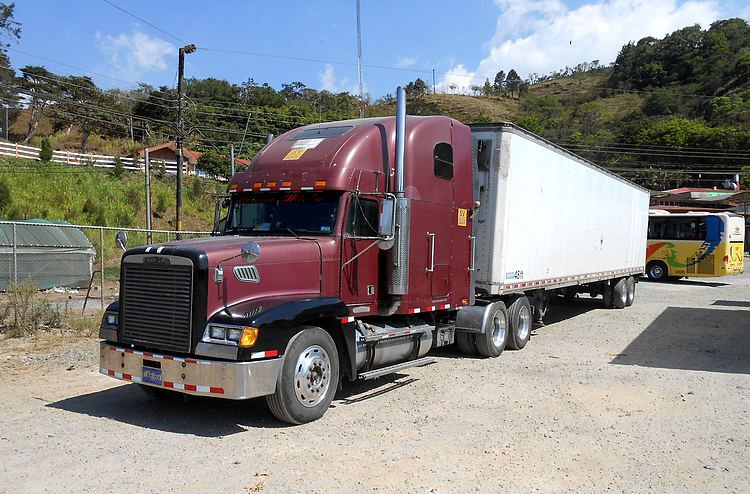
Here's another Freightliner at the same truck-stop on route 141.
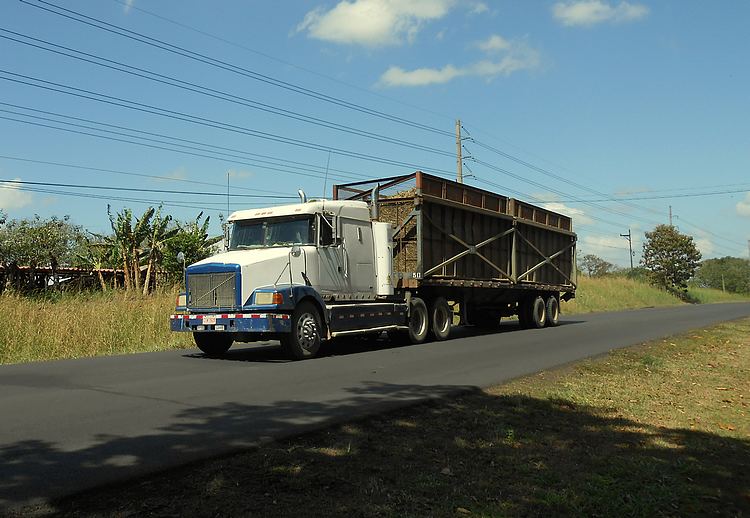
A major industry in the north of Costa Rica is sugar, and here is a Freightliner hauling sugar from the fields to one of the many processing plants.
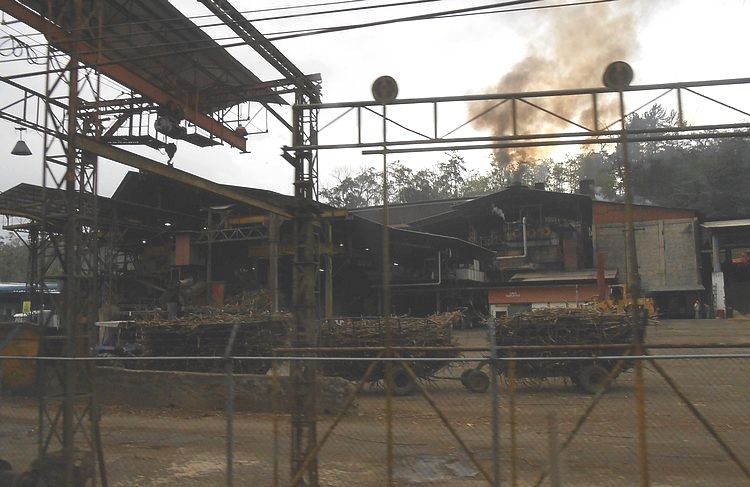
And this is a typical sugar processing plant.
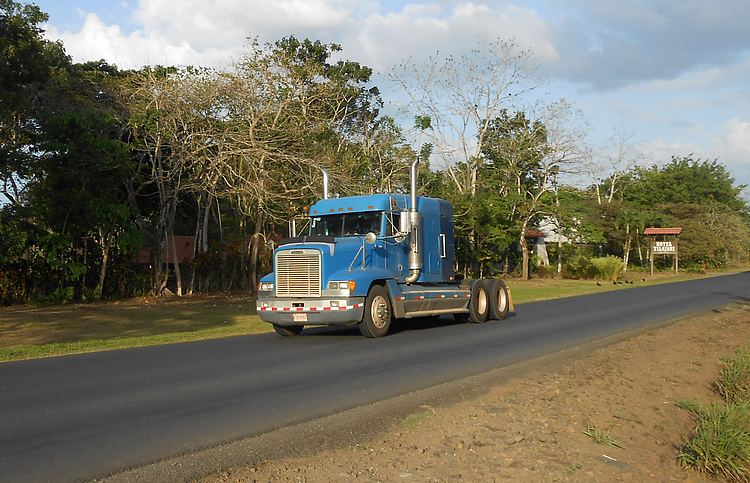
Above is another Freightliner. The sound from those mighty exhaust stacks is magnificent, especially when decellerating and several drivers (when they saw me taking the picture) gave the engine a special burst in salute.
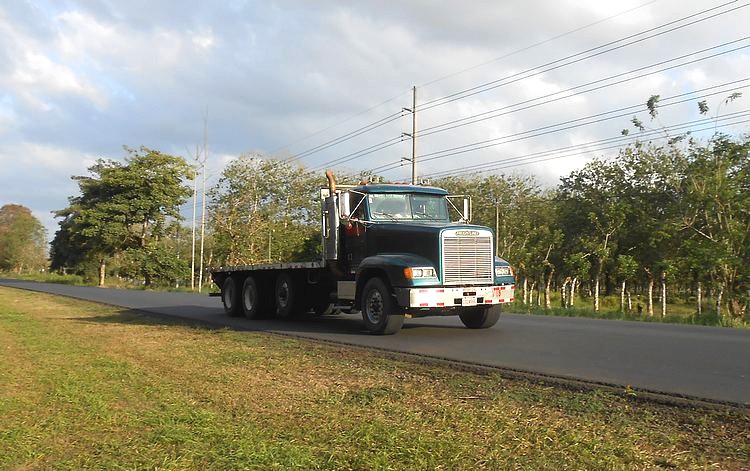
Here is a Freightliner flatbed with plenty of wheels.
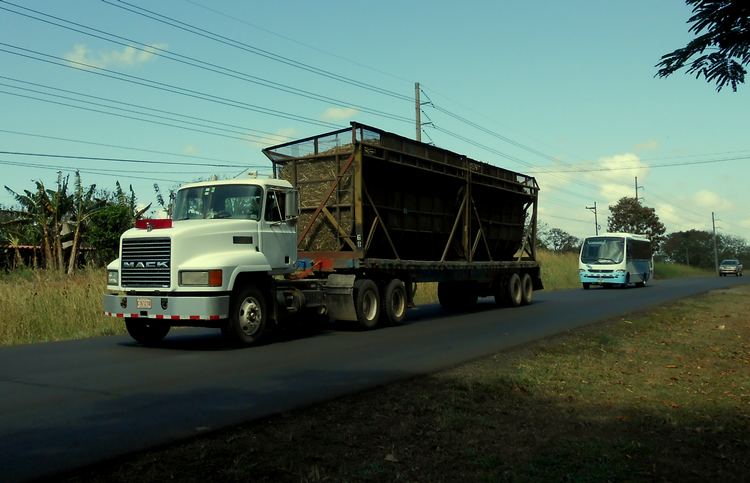
The second most common truck in Costa Rica was the Mack. Here is a Mack hauling sugar, which has been cut into lengths about a foot long.
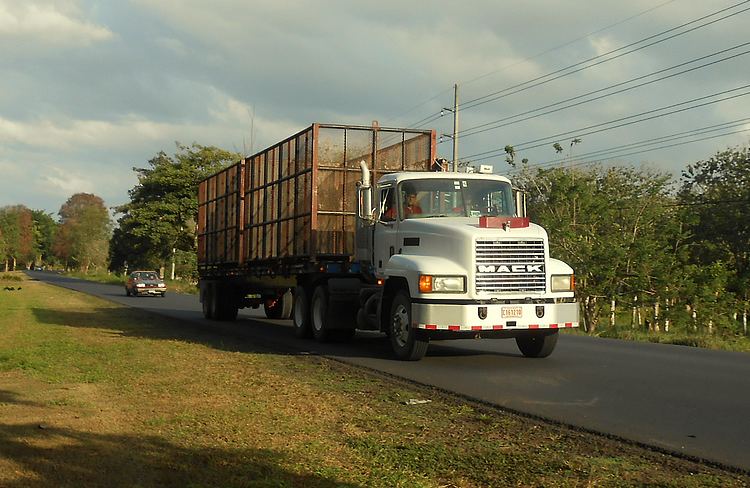
And this is a (suspiciously similar!) Mack returning empty for more sugar.

Some Macks have very small cabs...
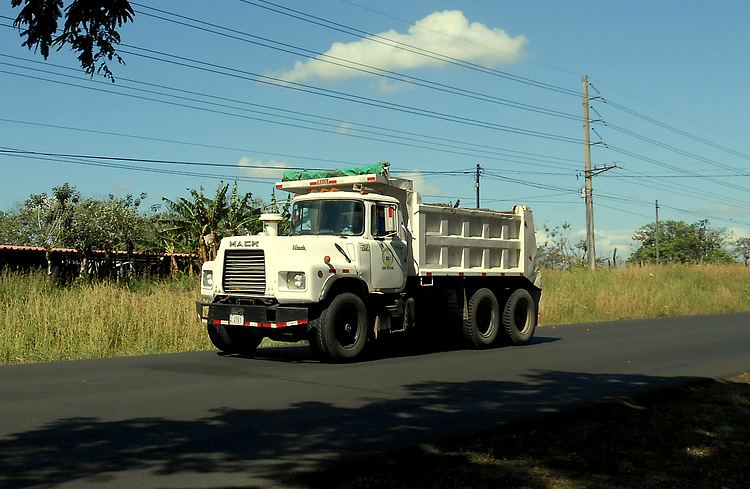
...like this 3-axle tipper.

And here's a 4-axle tipper.
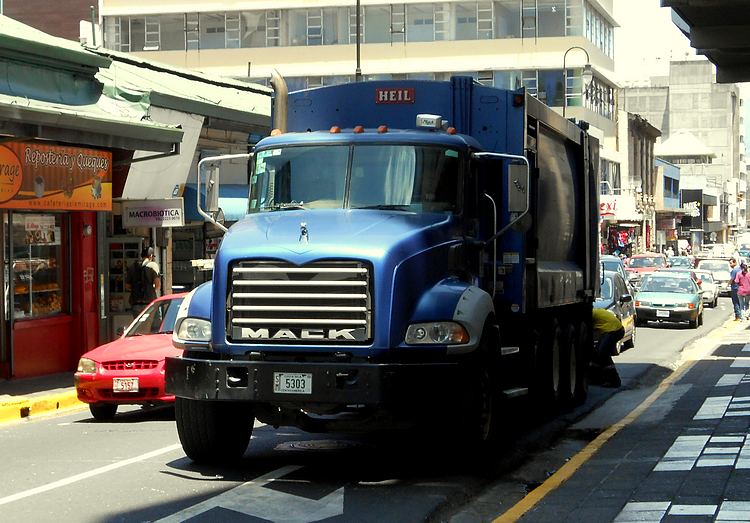
This is a Mack refuse truck in San Jose.
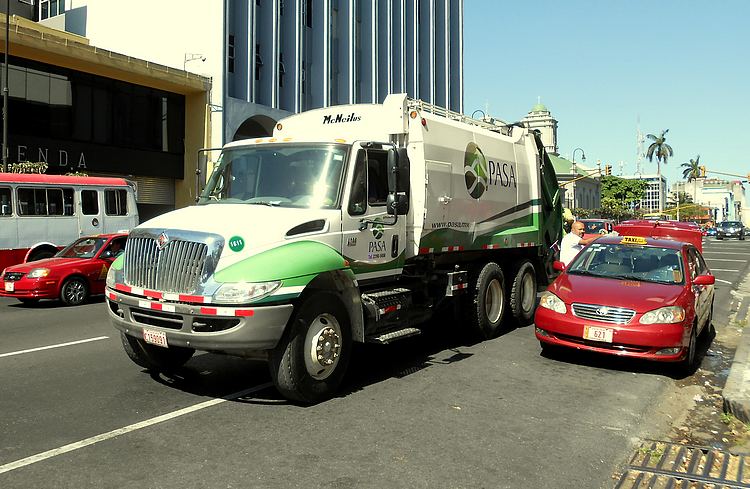
And this is an International refuse truck in San Jose. Internationals were very common too. Taxis in San Jose, as you can see, are red Toyotas. Wherever I travel I become more convinced that Toyota rules the world.
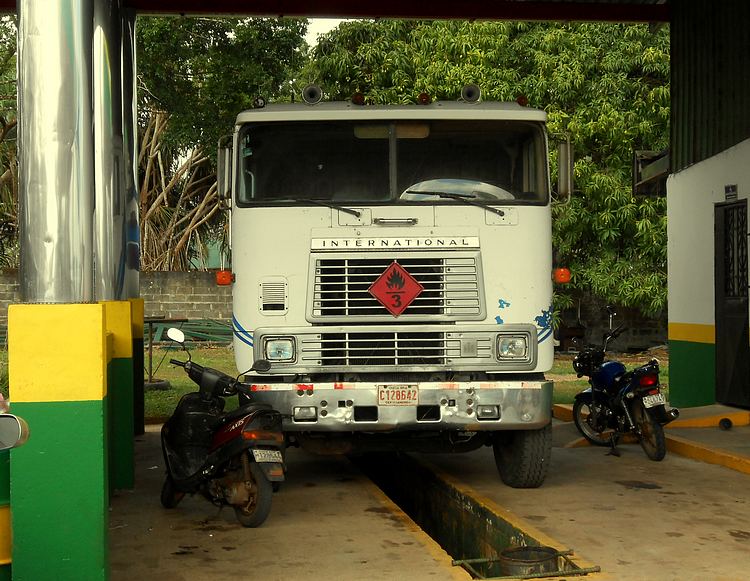
This is a very traditional-looking International over a pit in a garage near the Nicaraguan border. A quick word about licence plates. As far as I could see, all plates were white, with trucks mostly having black numbers (although not, for some reason, in this case!), cars having blue numbers, and vans and buses in red. Older plates were up to six numbers, but there now seems to be a switch to 3 letters and 3 numbers.

I think it's the plot of land that's for sale (se vende) not the truck, which is another International.
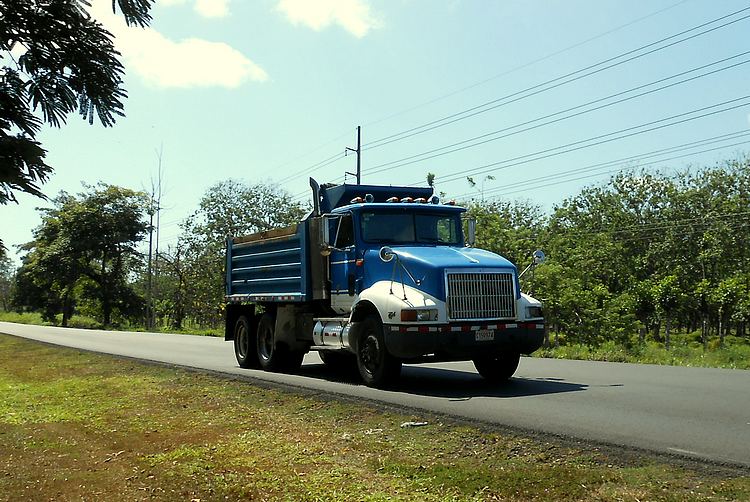
This International tipper is a bit newer - I believe it is a 4700 model.
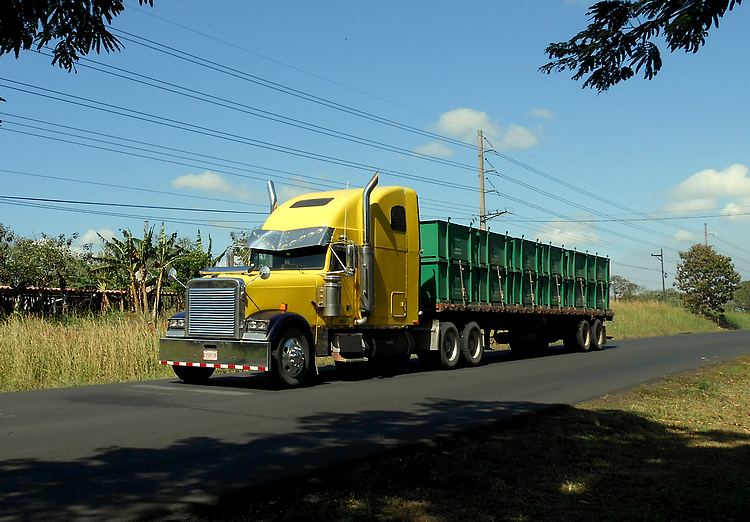
Kenworth is another famous name associated with American trucks, and here's one on the sugar run.
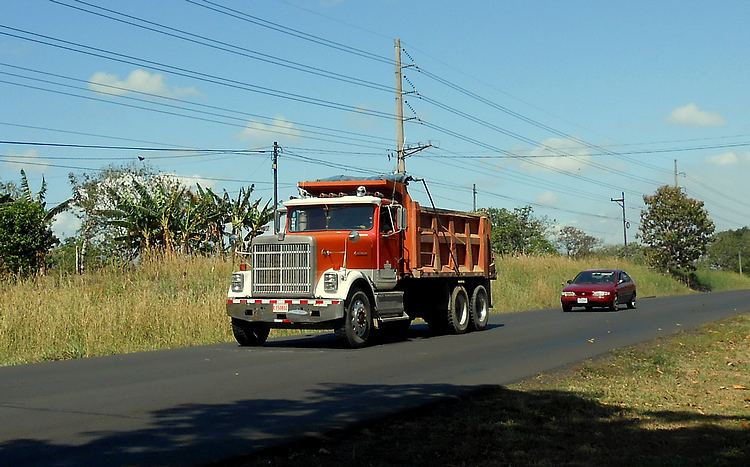
Another Kenworth, this time a tipper.
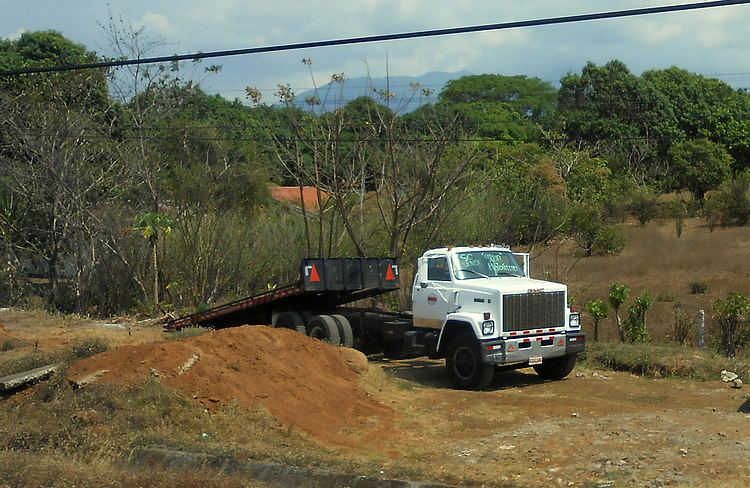
Here's an older G. M. C. up for sale. In some places near San Jose there are huge yards filled with big old U. S. trucks for sale.
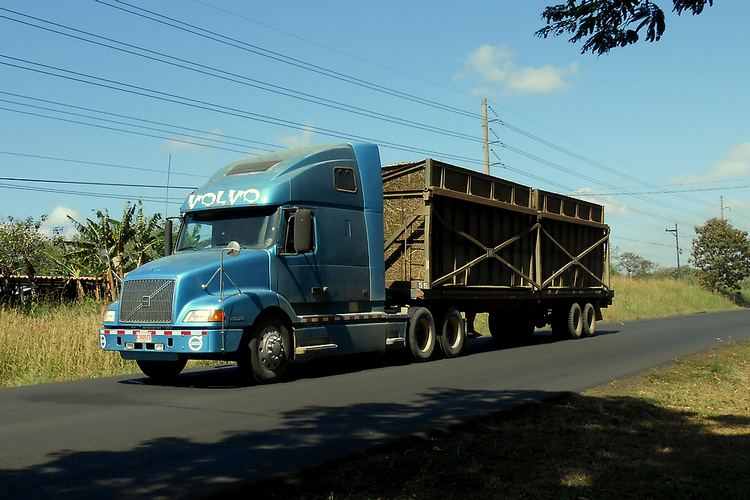
I guess Volvos are a bit boring in comparison, but here's one on sugar duties...
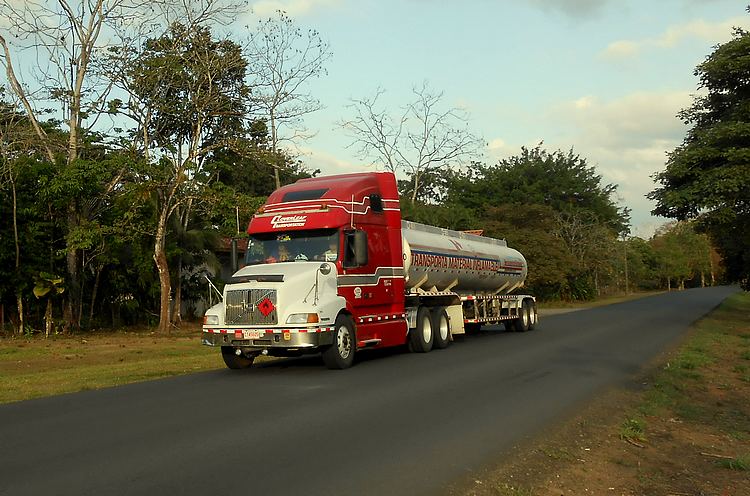
...and here another Volvo hauling petrol. We also saw Peterbilt and White trucks.
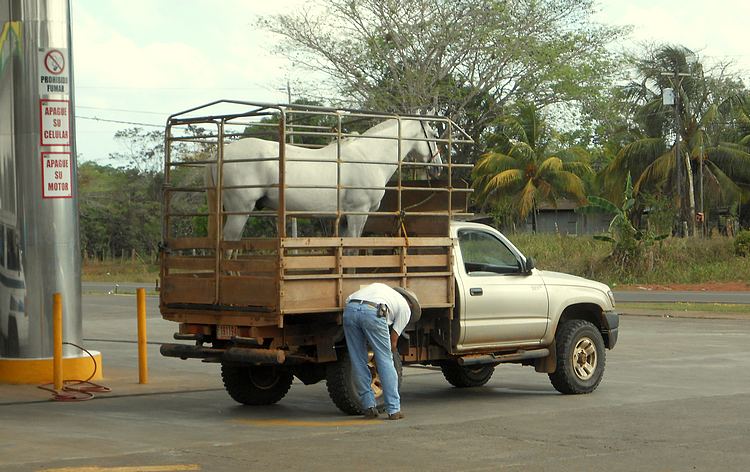
On the smaller side, here's a Costa Rican horse box. Surprisingly there were quite a lot of old (but not new) Land Rovers to be seen - the only British vehicles in the country.
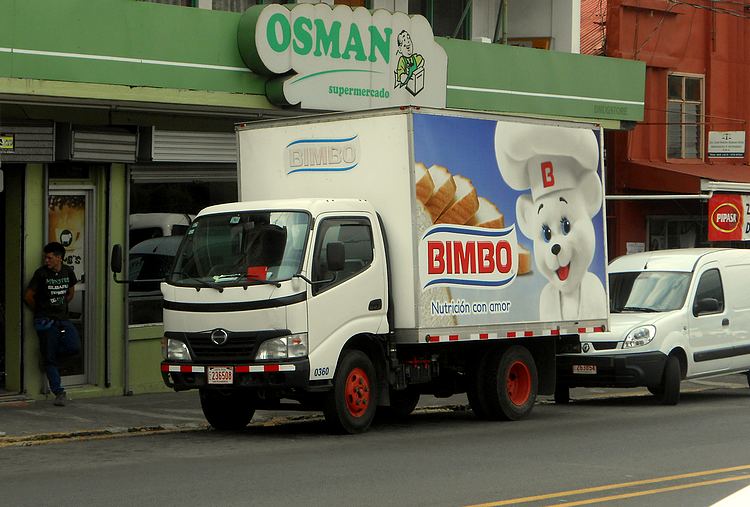
Japanese Hinos are quite common, and this one is loaded with Bimbos, (nutrition with love) (it's a type of bread, by the way).

I didn't expect to find Group 4 Security out there, but this is a Daihatsu Delta 3-ton chassis in use as a security van. Most of the light/medium trucks and vans were Isuzu, with some Mitsubishis and the occasional Chinese JAC.
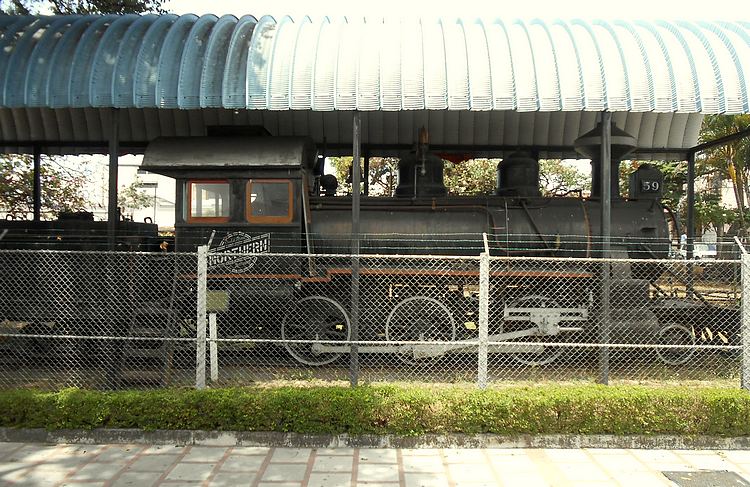
As I mentioned, there are virtually no trains left now, but they used to be busy taking bananas to the Atlantic and Pacific ports. This preserved 2-6-0 steam loco no. 59 from the Northern Railway (Atlantic side) in San Jose is one of the few reminders of it all.

Near Turrucares on route 27 west of San Jose is the remains of this narrow-gauge railway station, but it doesn't look as though it's seen a train for years.
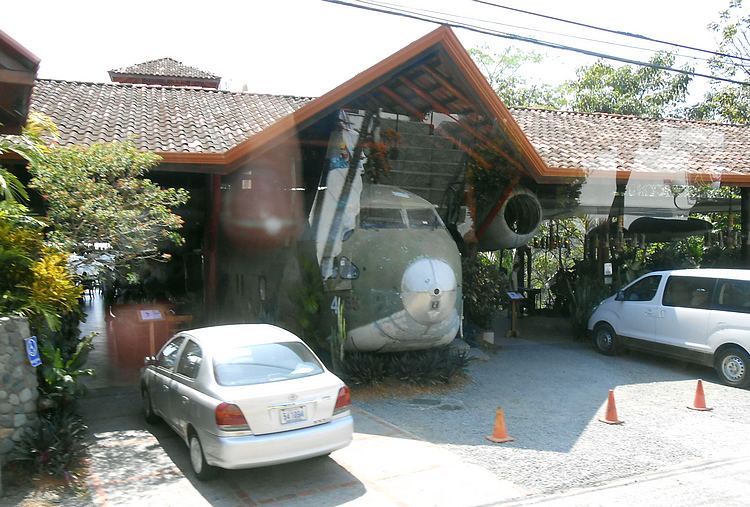
Sorry for the quality, but we were speeding past. This is El Avion Restaurant & Bar in Manuel Antonio National Park, near Quepos. It is built around the shell of Vietnam veteran Fairchild C-123 Provider (54-0663) which was one of two bought by the C. I. A. in the 1980s and operated by Corporate Air Services supporting Nicaraguan guerillas, but it was abandoned at San Jose in 1986 when the other Provider was shot down and the Iran-Contra affair fell apart. Some years later it as acquired by a local hotel owner and converted into a bar. The history of this aircraft and the clandestine operation it performed is a hell of a story (anyone remember Oliver North?) and too long to relate here. I'm told that the view of the Pacific from here at sunset is spectacular, and that there's a Boeing 727 fuselage round the other side!
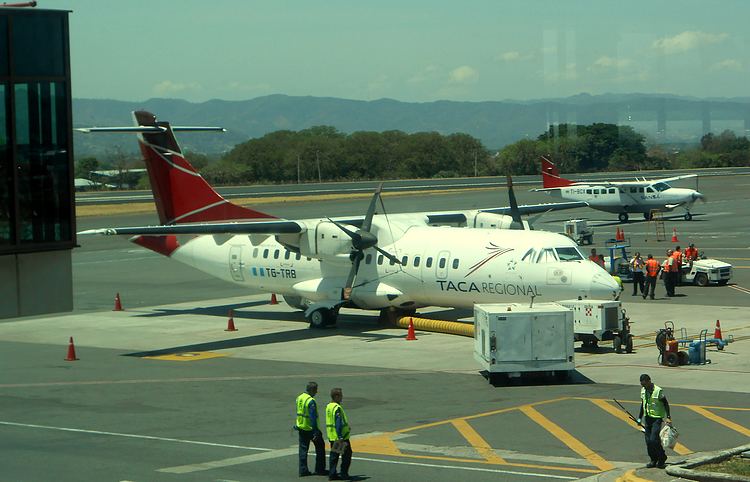
Lastly a quick look at the aviation scene at San Jose's International Airport. This is TG-TRB, an ATR-42-300 (one of three I think) belonging to TACA Regional Airlines. Parent company TACA (of El Salvador) merged with Avianca (of Colombia) in 2013, and all the group's aircraft will eventually be repainted into Avianca livery, at which point TACA will disappear. Part of the restructuring involved the downgrading of the airline's San Jose hub and the controversial loss of several hundred jobs.

This is a Cessna 208B Grand Caravan TI-BCX of Sansa Regional Airline, based in Costa Rica. It wears a livery similar to TACA, because the companies are associated.
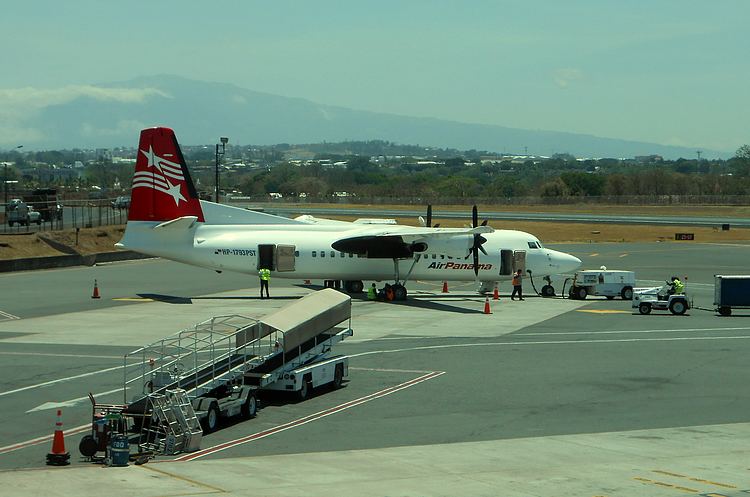
Finally this is HP-1793PST, one of four Fokker 50s belonging to Air Panama, the second largest airline in Panama. San Jose is their only international destination, so you normally have to travel to Panama to see one of these!
If you can add more details to the pictures on this page, I'd be delighted to hear from you.
Email Events diary Past events list Classified adverts Classic U.K. Buses Classic Irish Buses Classic Manx Buses